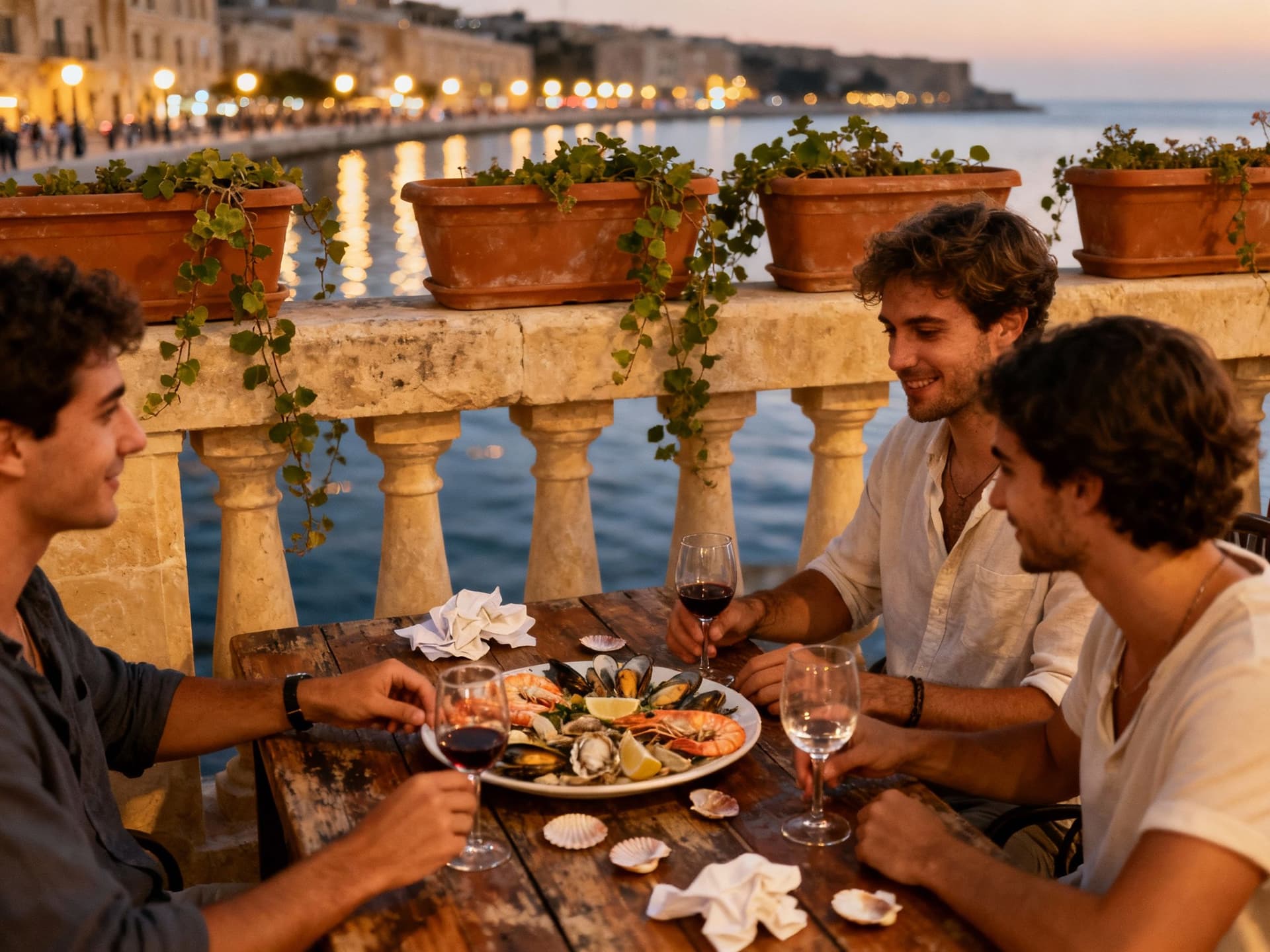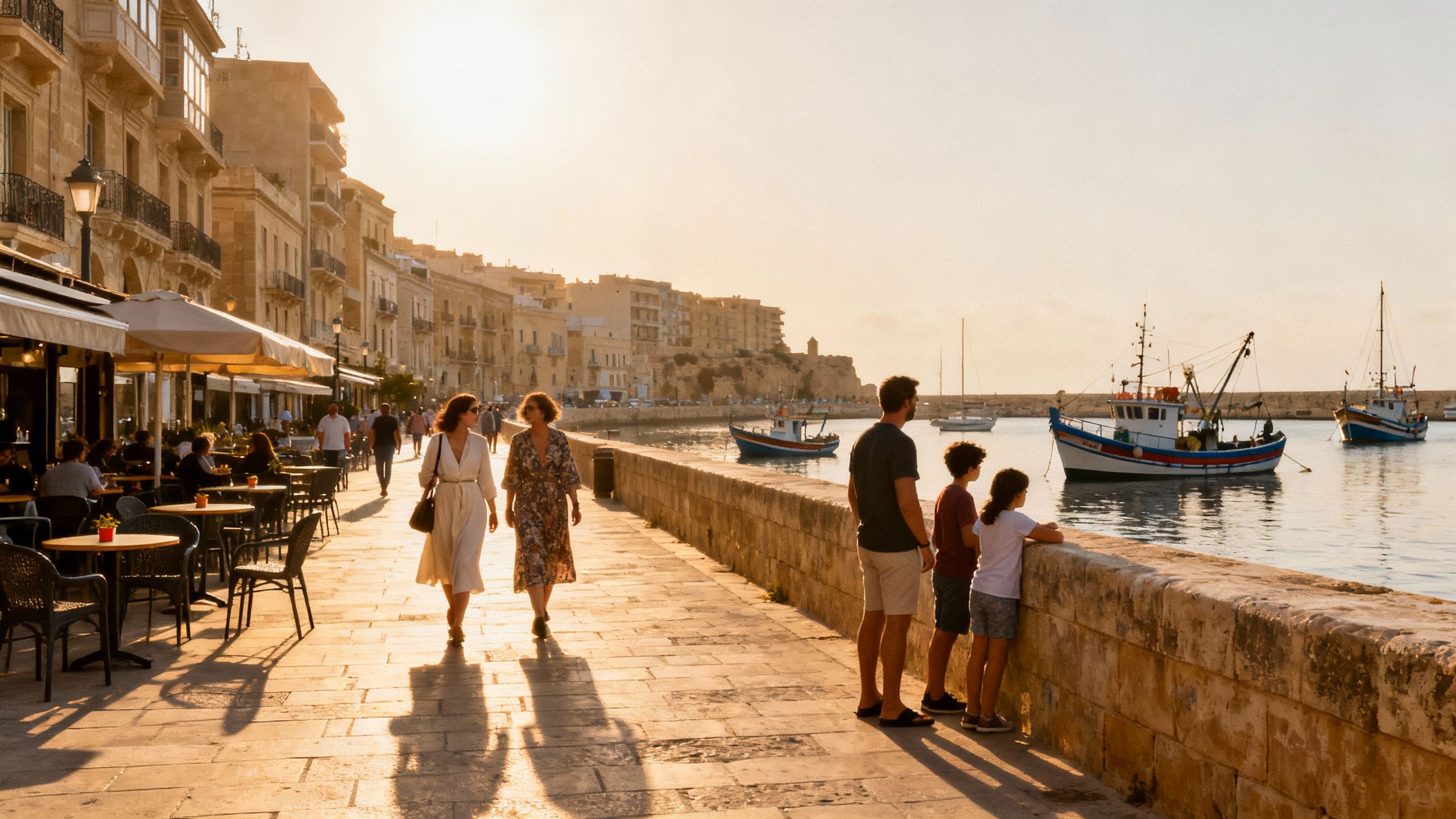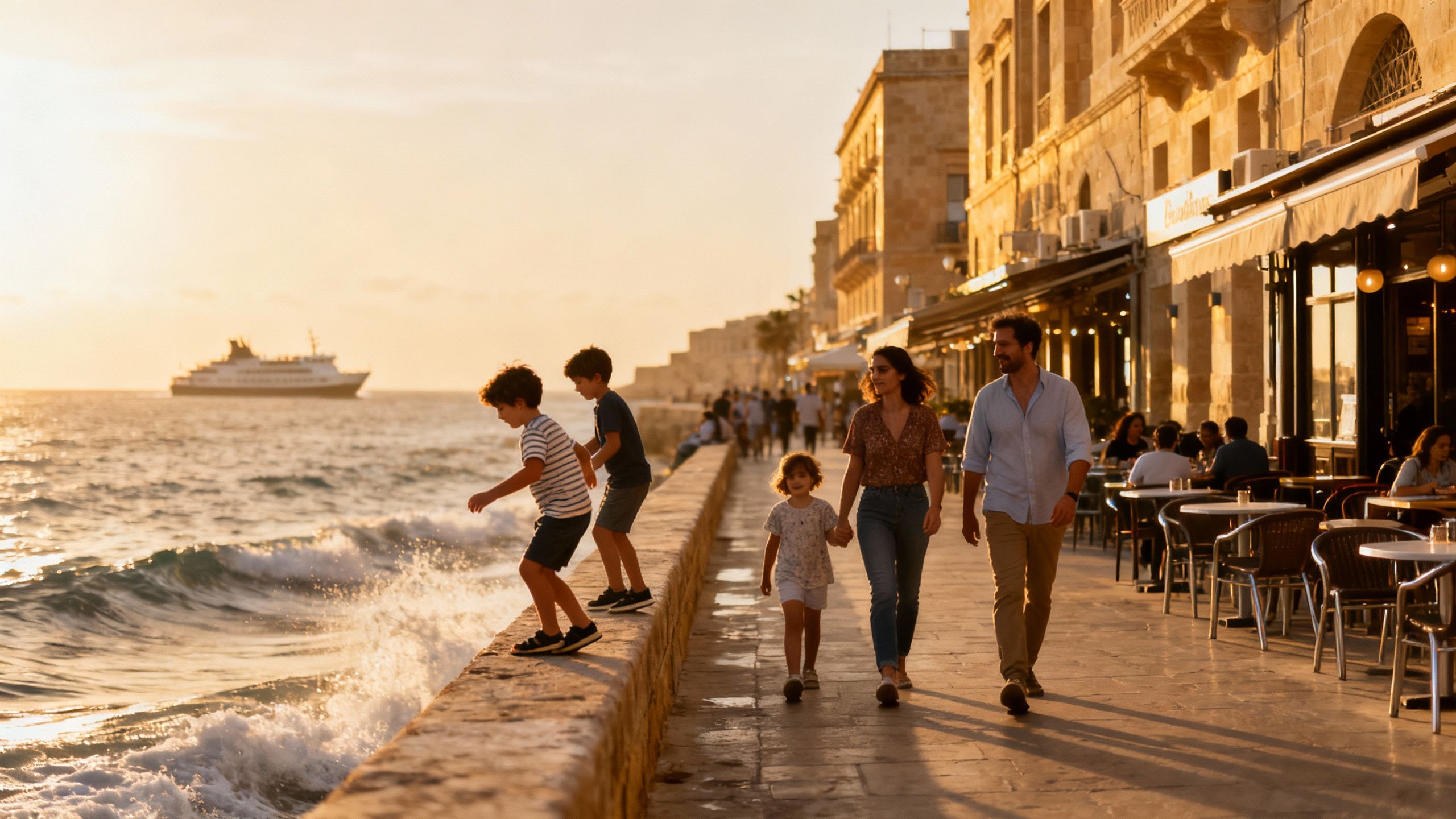When Malta’s Market Heats Up: Seasonal Neighbourhood Truths
A lifestyle-first comparison of Malta’s neighbourhoods with RPPI-backed market context and practical steps—visit off-season, prioritise provenance, and verify AIP permit rules.
Imagine stepping out at dawn onto Triq Sant’ Orsla in Sliema, the sea air threaded with roasted coffee and freshly baked pastizzi; fishermen tidy nets in Marsaxlokk's harbour as church bells call the morning. Malta moves with Mediterranean economy and ritual: market mornings, siesta-light afternoons, and lively evenings where neighbourhood trattorias double as salons. For anyone who has wanted to trade predictable commutes for a life shaped by light, stone and community, Malta's compactness is disarming—every neighbourhood is distinct and walking distances shrink the imagination.
Living the Malta lifestyle

Life here is intimate by design: narrow streets in Valletta reveal carved stone balconies and small cafés where neighbours know your order, while St Julian’s and Sliema present a different tempo—seafront promenades, cosmopolitan dining and the convenience of international services. Each area offers a distinct daily rhythm, and that rhythm is the primary consideration when choosing a home; the legal and permit landscape shapes where non-residents may buy, but the micro-vibe determines whether you will wake pleased or mildly resentful. The practical rules (permits for second homes, special designated areas) exist to protect the islands’ fabric; learn them early, but let the neighbourhood speak to you first.
Valletta & the Three Cities: concentrated heritage
Valletta is a study in sculpted stone and baroque proportion; mornings here mean museum quiet and afternoons play host to theatrical light across limestone façades. The Three Cities—Birgu, Bormla and Isla—offer a quieter, lived-in alternative where restoration projects and narrow stairways yield homes of character rather than scale. Expect high-ceilinged apartments, ornate cornices and, often, a need for sympathetic restoration; these neighbourhoods reward stewardship and patience more than instant convenience.
Sliema, St Julian’s and Paceville: modern convenience with caveats
If you prize seafront promenades, café culture and access to international schooling, Sliema or St Julian’s will feel comfortable immediately; terraces look out to the Mediterranean and evenings hum with discreet cosmopolitan energy. Yet these areas are also where demand concentrates, new-build blocks proliferate, and prices rise faster—what feels effortless today can cost you liquidity tomorrow. For refined buyers, the trade is often between walkable lifestyle and careful selection of buildings with enduring materials and considered proportions.
- Lifestyle highlights
- Morning espresso at Caffe Cordina in Valletta; slow lunch on St George’s Bay promenade.
- Weekend fish market walk and pastizzi at Marsaxlokk on Sundays.
- Late-afternoon swims at Golden Bay followed by a small family-run restaurant on the cliffs.
- Evening jazz or theatre in Valletta’s restored venues during festival season.
Making the move: practical considerations

The romance of small streets must be grounded in data. Malta’s Residential Property Price Index (RPPI) recorded an annual rise of approximately 5–6% in 2025, driven most strongly in maisonettes and prime harbour-front apartments, underscoring persistent demand across the islands. For a buyer this means timing and location matter: rapid price momentum in the north harbour region contrasts with more moderate movement elsewhere, and the AIP permit system (with exemptions for Special Designated Areas) shapes what you can and cannot purchase as a non-resident.
Property styles and how they shape life
Maisonettes, typical in older neighbourhoods, offer indoor-outdoor living with roof terraces that define Maltese summers; they suit someone who values private outdoor rooms and the intimacy of a neighbourhood. Apartments in new-build blocks on the promenade trade some character for convenience: lift access, modern services and rental appeal. Traditional houses in the Three Cities or village houses in Gozo often require careful conservation work but return unique spatial sequences not found in modern construction.
Working with local experts who know the life as well as the law
Choose advisors who can read both ledger and latte: agents and architects who understand RPPI trends, AIP permit logistics and the mechanics of sympathetic restoration. A good local agency sources off-market maisonettes, knows which blocks have enduring construction, and can introduce trusted conservators or structural surveyors. For international buyers, that network is the difference between an inspired purchase and one that requires years of remediation.
- Practical steps that preserve lifestyle and capital
- Prioritise neighbourhood fit over speculative uplift: visit at different times (market morning, weekday afternoon, festival evening).
- Confirm permit requirements early—an AIP application can take weeks and affects price thresholds and resale restrictions.
- Commission a local structural survey and a heritage-sensitive cost estimate for older homes before exchange of contracts.
- Engage an agency with demonstrated stewardship: look for projects where restoration respected materiality and proportion, not just aesthetic finishes.
Insider knowledge: what expats wish they'd known
Expats often arrive enamoured by sunlight and sea, then discover quotidian realities—seasonal tourism rhythms, the cost of importing specialist materials, and the intimacy of small-community expectations. Language is less of a barrier than anticipated—English is an official language—but social integration takes time; invitations come slowly, and neighbourliness matters. Over several seasons you learn which streets feel lived-in and which have become transactional; the former is where you will stay.
Cultural integration and daily life
Attend festa nights, volunteer at the local band club, and buy from the fishmonger—these are practical routes into community that also reveal neighbourhood character. Practicalities such as waste collection schedules, parking permits and the rhythms of small shops determine daily convenience more than glossy marketing photos. Accepting the island’s pace—its generosity and occasional friction—makes the difference between a house that simply functions and a home that belongs.
Long-term stewardship: how life evolves here
Malta rewards those who think in generations: properties with good provenance, quality stonework and considered restoration generally hold value despite short-term cycles. As tourist seasons swell and supply remains constrained in favoured wards, communities that protect material integrity and limit overdevelopment will also protect long-term desirability. If you intend to pass a home to heirs, prioritise craftsmanship and context over transient trends.
Conclusion: Malta asks for curiosity and a measured eye. Choose neighbourhoods that align with how you wish to live—Valletta’s intimacy, Sliema’s promenade life, Marsaxlokk’s slow harbour days—and pair that choice with local counsel who can translate permit rules and price trends into a durable investment. Visit out of season, prioritise substance over spectacle, and seek agents who present restoration as stewardship; those steps will let the island’s light do the rest.
Norwegian with years in Florence guiding clients across borders. I bridge Oslo and Tuscany, focusing on legal navigation, cultural context, and enduring craftsmanship.


